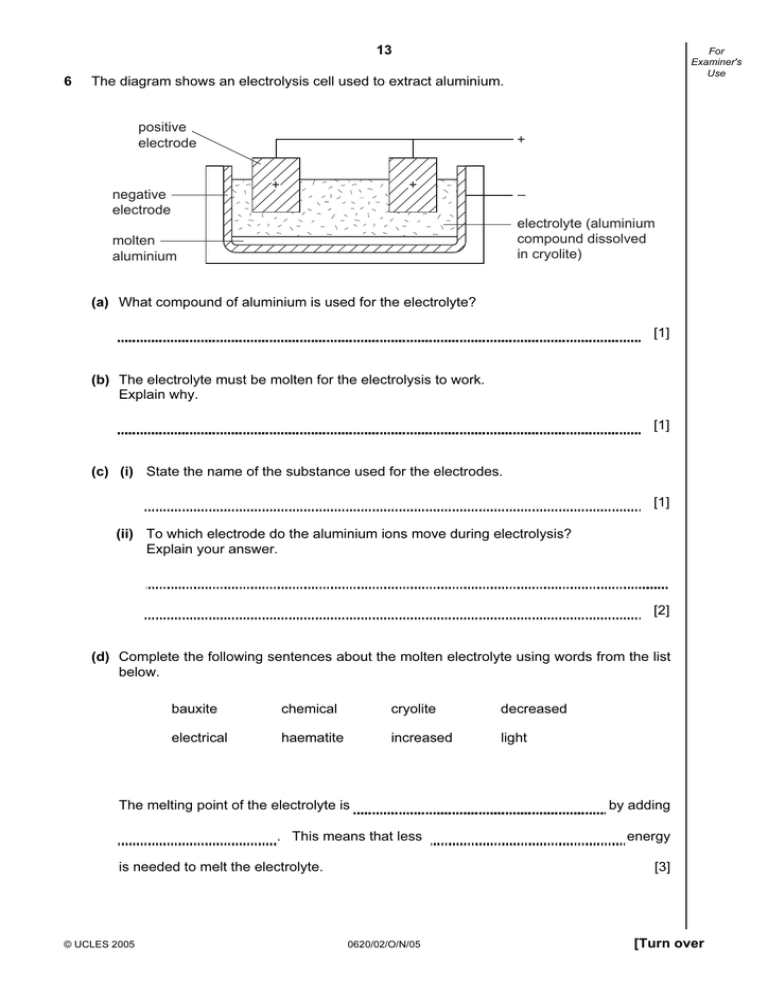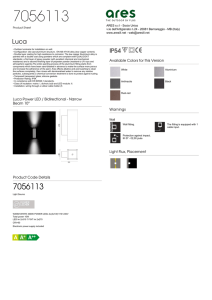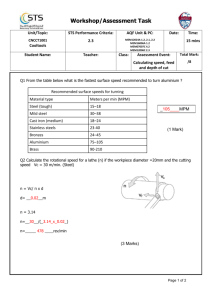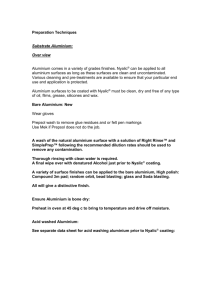10 - mdr science academy
advertisement

13 6 For Examiner's Use The diagram shows an electrolysis cell used to extract aluminium. positive electrode + + negative electrode + – electrolyte (aluminium compound dissolved in cryolite) molten aluminium (a) What compound of aluminium is used for the electrolyte? [1] (b) The electrolyte must be molten for the electrolysis to work. Explain why. [1] (c) (i) State the name of the substance used for the electrodes. [1] (ii) To which electrode do the aluminium ions move during electrolysis? Explain your answer. [2] (d) Complete the following sentences about the molten electrolyte using words from the list below. bauxite chemical cryolite decreased electrical haematite increased light The melting point of the electrolyte is . This means that less is needed to melt the electrolyte. © UCLES 2005 by adding energy [3] 0620/02/O/N/05 [Turn over 14 For Examiner's Use (e) Aluminium is used in overhead power cables. steel cored aluminium cables aluminium steel core pylon The table shows some properties of three metals which could be used for the power cables. metal relative electrical conductivity density / grams per cm3 price / £ per kg relative strength aluminium 0.4 2.70 18 9 copper 0.7 8.92 15 30 steel 0.1 7.86 2.7 50 (i) Suggest why aluminium is used for overhead power cables rather than copper. [1] (ii) Suggest why steel is not used alone for overhead power cables. [1] (iii) Why is steel used as a core for overhead power cables? [1] (iv) Electrical insulators are used in parts of the pylons which carry the electrical cables. Which one of the following is an electrical insulator? Put a ring around the correct answer. aluminium © UCLES 2005 ceramic graphite 0620/02/O/N/05 zinc [1] 15 For Examiner's Use (f) Aluminium has many uses. (i) Why is aluminium used for aircraft bodies? [1] (ii) Describe a test for aluminium ions. test result [3] Permission to reproduce items where third-party owned material protected by copyright is included has been sought and cleared where possible. Every reasonable effort has been made by the publisher (UCLES) to trace copyright holders, but if any items requiring clearance have unwittingly been included, the publisher will be pleased to make amends at the earliest possible opportunity. University of Cambridge International Examinations is part of the University of Cambridge Local Examinations Syndicate (UCLES), which is itself a department of the University of Cambridge. © UCLES 2005 0620/02/O/N/05





